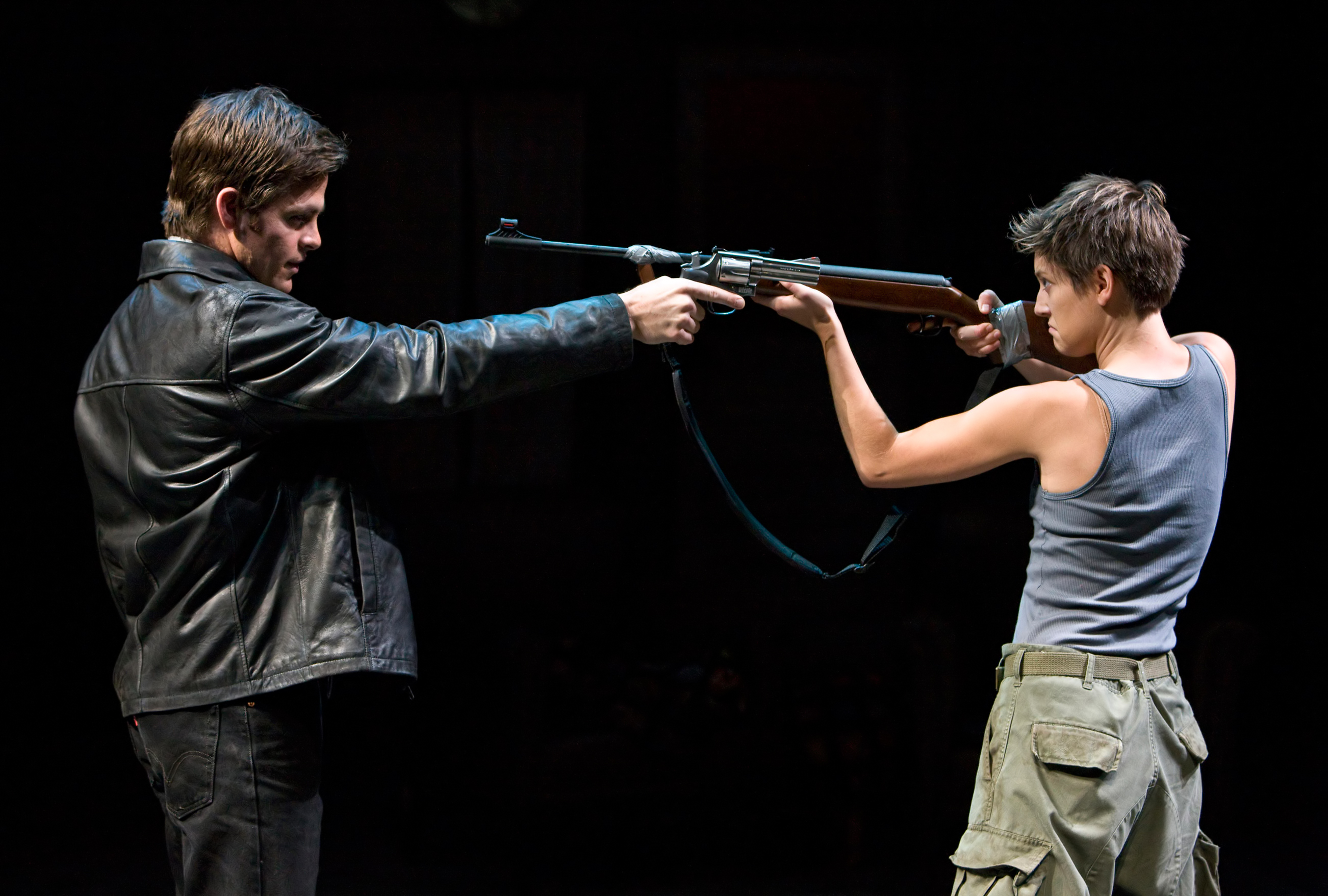Methinks the writer of “The Lieutenant of Inishmore” must have watched “The Boondocks Saints” once too often. Both, for example, focus on Irish characters encircled by violence, both fixate upon death as a comeuppance and (most importantly) both prominently feature a dead cat.
“The Lieutenant of Inishmore” is a gruesome dark comedy playing at the Mark Taper Forum in Downtown Los Angeles, starring the ever-memorable Chris Pine (who was, in case he wasn’t ever-memorable to you, Captain Kirk in the recent “Star Trek” movie) as a bloodlusting, crazed terrorist named Padraic bent on splintering off from a splinter group.
The play focuses on an Irish household in the early ’90s, inhabited now only by the elderly Donny (Sean G. Griffin), with constant visits from the neighborhood youngster Davey (Coby Getzug).
The play opens with Davey lugging Padraic’s cat Wee Thomas, which is no longer a cat but more a furry rag doll, into Donny’s house. Both conspire to hide the cat casualty from Padraic, whose only friend was the feline, according to Donny. Padraic is out of town, brutally tearing toenails off a drug dealer, when he hears word of his pet’s tragedy. He immediately rushes back into town to determine the fate of his beloved Wee Thomas.
The set is a small Irish home, surrounded by strangely rectangular rocks. While the simplicity of the stage is off-putting at first, it does an excellent job of contrasting with the action and, more importantly in the second act, retaining blood as though it were a swimming pool. The lights are similar, only once making themselves painfully notable when one light fades and another does not so that an actor can perform on his half of the stage without any distraction.
The dialogue between Davey and Donny is Monty Python-esque in nature, constantly undermining the gravity of their situation when it’s dangerous, but playing up the melodramatics when the topic is as trivial as whether cats like the cereal “Frosties.” Complete with copious amounts of Irish slang, the play does a fair job of keeping the audience well-reminded of the plot’s satirical saturation.
While the acting can sometimes feel partly childish, each character is clearly defined, perhaps bordering on cartoonish. Through this unclear delineation between the story and the grotesque, it is somewhat of a challenge to become entirely engaged. Any time the story begins to attract the audience’s attention, the disturbingly dark half of it is disgusting enough to push you away.
It’s also hard to get past the fact that the writing seemed to beg for cheap laughs, though most of the gags succeed.
Despite all this, the play has a crisp and refreshing quality that reminds the average theatergoer not to simply remain in their own comfort zone. While it can be hard to watch, it makes extremely salient points, all the while proving that theater was and always will be a sort of blood sport.
Though we are trained to be disgusted by the dismemberment of bodies on stage, deep down there is a carnal desire for more. “Lieutenant of Inishmore” plays wholeheartedly off this craving. The performance is just as much about watching the actors dealing with the grotesque exhibit placed before them as it is about watching fellow audience members squirm uncomfortably as a pair of pliers are used to cut a resilient spine.
All in all, the play might occasionally feel childish despite its mature subject, but makes up for it with a sort of twisted aesthetic, ping-pong-like dialogue and the overwhelming sense that the actors are all enjoying this as much as you are.
Well, everyone but the cat.
